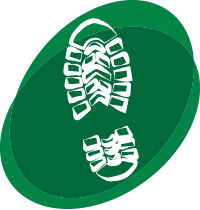Randomly acquired characteristics (RACs), also known as accidental marks, are random markings on a shoe sole, such as scratches or holes, that are used by forensic experts to compare a suspect’s shoe with a print found at the crime scene. This article investigates the relationships among three features of a RAC: its location, shape type and orientation. If these features, as well as the RACs, are independent of each other, a simple probabilistic calculation could be used to evaluate the rarity of a RAC and hence the evidential value of the shoe and print comparison, whereas a correlation among the features would complicate the analysis. Using a data set of about 380 shoes, it is found that RACs and their features are not independent, and moreover, are not independent of the shoe sole pattern. It is argued that some of the dependencies found are caused by the elements of the sole. The results have important implications for the way forensic experts should evaluate the degree of rarity of a combination of RACs.
Dependence among Randomly Acquired Characteristics on Shoeprints and their Features

Journal: Forensic Science International
Published: 2018
Primary Author: Naomi Kaplan
Secondary Authors: Micha Mandel, Serena Wiesner, Yoram Yekutieli, Yaron Shor, Clifford Spiegelman
Type: Publication
Research Area: Footwear
Related Resources
Shoeprint Alignment and Comparison using Maximum Cliques
This presentation is from the 107th International Association for Identification (IAI) Annual Educational Conference, National Harbor, Maryland, August 20-26, 2023. Posted with permission of CSAFE.
An algorithm for source identification of footwear impressions—its application on pristine shoeprints and crime-scene like shoeprints
This presentation is from the 107th International Association for Identification (IAI) Annual Educational Conference, National Harbor, Maryland, August 20-26, 2023. Posted with permission of CSAFE.
CSAFE Project Update & ASCLD FRC Collaboration
This presentation highlighted CSAFE’s collaboration with the ASCLD FRC Collaboration Hub.
Source identification of shoeprints in mock crime scene using an algorithm based on automatic alignment
This presentation is from the 75th Anniversary Conference of the American Academy of Forensic Sciences, Orlando, Florida, February 13-18, 2023. Posted with permission of CSAFE


